Yemen-Bound Missile Parts, Sensor Systems Seized In SEAL Raid
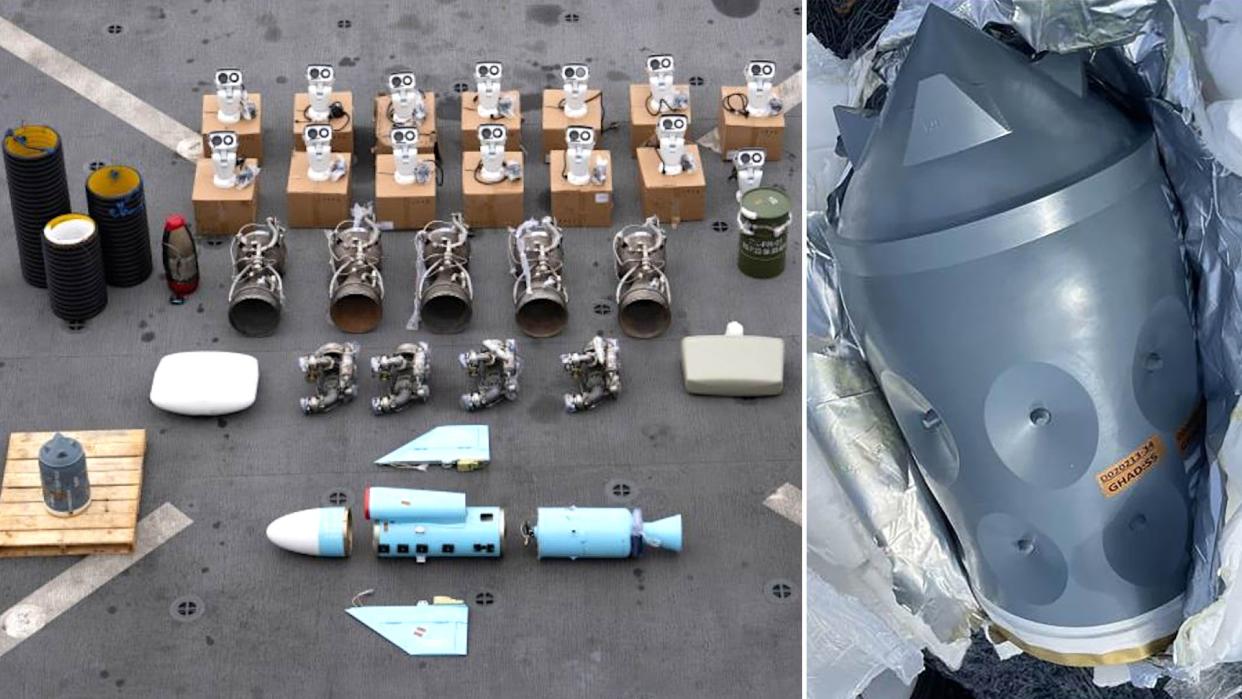
The U.S. military has offered a look at anti-ship cruise missile and medium-range ballistic missile components, as well as sensor turrets, that were recently seized during a U.S. Navy SEAL raid of a dhow. This materiel was bound for Iranian-backed Houthi militants in Yemen, which have their arsenals of exactly these kinds of capabilities targeted in U.S. and British strikes in the past week.
U.S. Central Command (CENTCOM) released pictures and other information about the seized materiel, which was recovered from an unnamed dhow off the coast of Somalia on January 11. The dhow was deemed to be unsafe and was sunk, and the final "disposition" of its 14 crew members is now "being determined in accordance with international law."
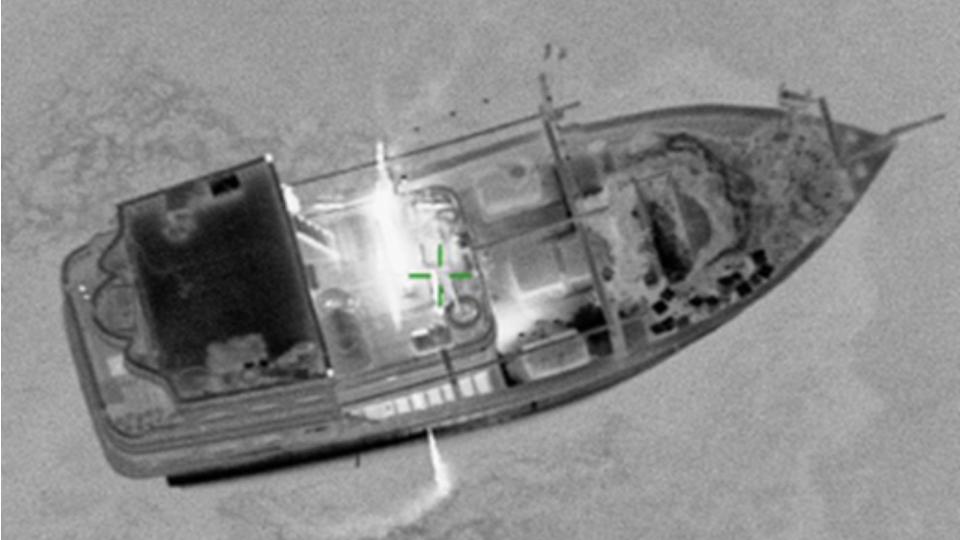
U.S. Navy SEALs operating from the Expeditionary Sea Base ship USS Lewis B. Puller, with the help of helicopters and drones, conducted the complex nighttime boarding operation. Two SEALs went missing at sea during the mission and search and rescue operations to try to find them are still ongoing.

"This is the first seizure of lethal, Iranian-supplied advanced conventional weapons (ACW) to the Houthis since the beginning of Houthi attacks against merchant ships in November 2023," according to CENTCOM. "The interdiction also constitutes the first seizure of advanced Iranian-manufactured ballistic missile and cruise missile components by the U.S. Navy since November 2019. The direct or indirect supply, sale, or transfer of weapons to the Houthis in Yemen violates U.N. Security Resolution 2216 and international law."
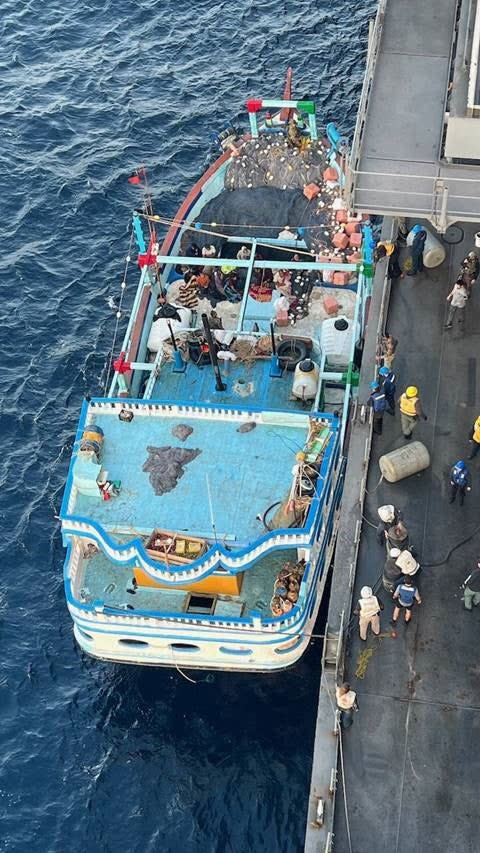
For months now, Yemen's Houthis have been launching a variety of anti-ship ballistic and cruise missiles, as well as drones, at foreign warships and commercial vessels in and around the Red Sea and the Gulf of Aden. The War Zone recently did a deep dive into in the Yemeni militant group's anti-ship missile capabilities that you can find here.
The Houthis, who say they are acting in retaliation for the ongoing conflict in the Gaza Strip, have also launched missiles and drones at Israel on multiple occasions since October 2023.
The most readily identifiable items that U.S. forces seized in the recent interdiction are components of a C-802-based anti-ship cruise missile. Iranian produces a number of variants and derivatives of this Chinese-designed weapon, several of which have subsequently appeared in Houthi hands. All of these missiles have guidance packages that consist of an inertial navigation system (INS) to get to the general target area and an active radar seeker for use in the terminal attack phase of flight.
The C-802-related parts that were recovered from the dhow include the missile's guidance and engine sections, the rocket booster used to launch it, and some of its fins. An example of the distinctive warhead used in the C-802 and related missiles, which is derived from the one in the famed French-made Exocet anti-ship cruise missile, was also seized. The warhead is a semi-armor piercing blast-fragmentation type that is designed to pierce the hull of ships and then explode outward for maximum damage.


U.S. forces also seized Iranian-made C-802 missile-related components in November 2019.
In terms of cruise missile related components in the seized cache, John Krzyzaniak, an Iran researcher at the Wisconsin Project, noted on X that there is also what may be a single Tolou-10 turbojet (also sometimes written Tolue-10). This is an unlicensed Iranian copy of the Czech TJ-100 used on a number of anti-ship and land-attack cruise missiles, including types have been supplied to the Houthis. It also appears to be used on the jet-powered Shahed 238 kamikaze drone, which Russian forces may now be employing in Ukraine.

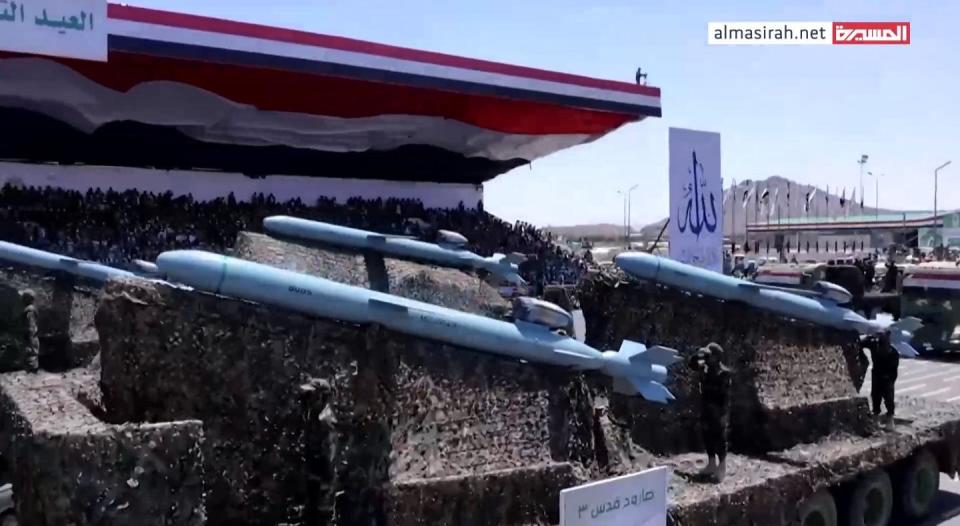
Five rocket motors (and what appear to be associated components) that CENTCOM assessed to be for use on medium-range ballistic missiles (MRBM) were in the recently seized cache bound for the Houthis. MRBMs are defined as ballistic missiles with maximum ranges between 620 and 1,860 miles (1,000 and 3,000 kilometers).
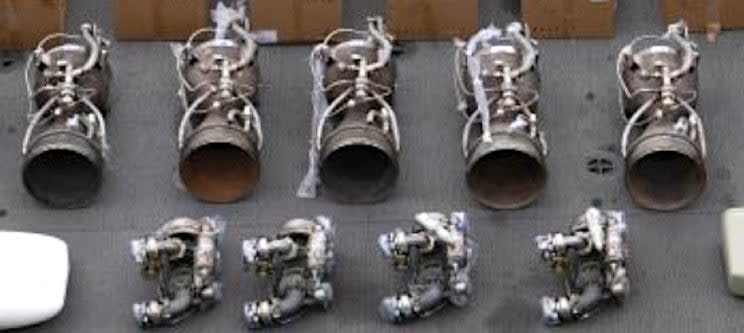
Fabian Hinz, a Research Fellow for Defense and Military Analysis at the International Institute for Strategic Studies (IISS) who has followed Iranian and Houthi missile developments closely, wrote on X that these motors looked to be liquid-fueled types similar to those found on variants and derivatives of the Soviet Scud. The Yemeni militants have a number of Iranian-designed MRBMs in their arsenal, including members of the Qiam series, which are Scud-derived designs. Iran used Qiam-1s in its ballistic missile strikes targeting U.S. forces in Iraq in 2020.
Since October 2023, the Houthis have fired several MRBMs at Israel, a number of which have been intercepted. The Yemeni militants also fired an MRBM at the United Arab Emirates in 2022, which was shot down. Saudi Arabia has come under attack the group's extensive ballistic arsenal in the past, too.
U.S. forces also recovered a dozen sensor turrets that look to have a combination of electro-optical and infrared cameras from the dhow off the coast of Somalia. Though less eye-catching than the missile components, these are among the more interesting items in the cache.

It's not immediately clear what the Houthis would use these for, but they look to be what CENTCOM's statement describes these as "air defense associated components."
The Houthi air-defense arsenal is known to include examples of the Soviet-designed Kub surface-to-air missile system, known as the SA-6 Gainful in the West. In addition, the group has various shoulder-fired surface-to-air missiles, also known as man-portable air defense systems (MANPADS).
However, the Yemeni militants have also expanded their air defense capabilities with ad hoc systems that use repurposed Soviet-designed infrared-guided air-to-air missiles, including the R-27, R-73, and R-77 types. These improvised air defense systems are known to use sensor turrets – including U.S. made types – with infrared cameras to help spot and track targets and cue the missiles.
https://www.youtube.com/watch?v=hSrh7GWtoR0
More recently, the Houthis have also acquired variants of a novel Iranian weapon, often described as "loitering" surface-to-air missile, which also appears to use an infrared seeker to find its targets. Infrared sensors on the ground could be used to in conjunction with these weapons, which the Houthis have dubbed the Saqr-1 and that the U.S. government refers to simply as the "358" missile. You can read more about this curious design in detail here.
The video below includes a clip that appears to shows a Saqr-1/358 missile intercepting a Predator XP drone belong to the United Arab Emirates, not a U.S. MQ-1.
The Houthis have used their air defense capabilities to good effect, shooting down multiple crewed combat jets and drones belonging to the Saudi Arabian-led coalition over the years. The group has also downed multiple U.S. drones, including an MQ-9 Reaper flying over the Red Sea just last November. The Yemeni militants routinely release video shot by infrared video cameras on the ground following claims to have knocked out foreign aircraft.
The Houthis could also cannibalize the sensors in these turrets for other purposes, including for use as seekers for munitions.
Overall, the seized materiel offers just a glimpse of the now well-established and extensive smuggling enterprise that furnishes the Houthis with advanced weapons and other equipment from Iran.
That the Houthis would be especially active now to try to bolster their surface-to-surface and air-to-surface missile arsenal makes good sense. "Initial analysis indicates these same weapons have been employed by the Houthis to threaten and attack innocent mariners on international merchant ships transiting in the Red Sea," CENTCOM's statement today noted.
Furthermore, these are precisely the kinds of Houthi assets that have been targeted by the United States and the United Kingdom in the past week. New preemptive U.S. strikes just today hit some of the group's anti-ship ballistic missile launchers. Much larger American and British strikes last week were specifically focused on degrading the Yemeni militants' missile, drone, and air defense capabilities.
In the meantime, the Houthis have already demonstrated their continued ability to launch attacks on warships and commercial vessels, significantly disrupting maritime trade in the strategic region. Just today, the Royal Navy-managed United Kingdom Maritime Trade Operations (UKMTO) office reported an attack on a commercial ship in the Red Sea. The alert said that the vessel sustained damage above the waterline, but no fire resulted. The ship's crew are said to be safe and were still proceeding to their next port of call.
Subsequent reports have identified the ship in question as the Malta-flagged, Greek-owned, bulk carrier Zografia, which was sailing north in the Red Sea at the time of the attack.
The Houthis have also vowed to strike U.S. facilities in the region, but have so far not followed through on those threats. Iranian forces did launch ballistic missile strike targets in Iraq and Syria yesterday, but American forces and assets do not appear to have been directly targeted in either case.
At the moment at least, the Houthis show no signs of halting their attacks in and around the Red Sea and the Gulf of Aden. Tit-for-tat U.S. strikes, as well as those by allies and partner like the United Kingdom, look similarly set to continue.
As the seizure last week has shown, interdiction of shipments of missile-related and other materiel to the Houthis continues to be another important component of limiting the group's ability to bolster and recapitalize its arsenal.
Update 5:05 PM EST
The Associated Press is now reporting, citing a U.S. official and two other people familiar with the discussions, that American authorities are moving re-list Yemen's Houthis as a designated terrorist group. President Donald Trump's administration first applied this designation to the Houthis just days before Joe Biden was sworn into office in January 2021.
Biden's administration then revoked the designation the following month, a decision that officials said was driven largely by a desire to ease the flow of humanitarian aid into the country. A foreign terrorist organization designation imposes a host of limitations on how U.S. nationals can interact with the group in question and vice versa.
Contact the author: howard@thewarzone.com

